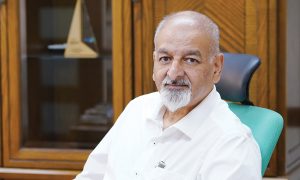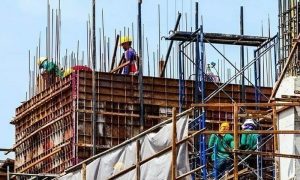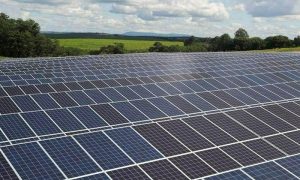To immediately start using re-gasified liquefied natural gas (RLNG) as alternative fuel to reduce electricity shortfalls in Karachi, The National Electric Power Regulatory Authority (Nepra) has permitted K-Electric to move ahead.
The permission has been granted on a provisional basis to `provide immediate relief to end consumers` as the regulator completes the normal legal and procedural processes and puts in place the mechanism for dealing with the difference in cost between imported RLNG and domestic gas that KE currently uses.
The `K-Electric is hereby allowed, immediate application of RLNG as alternative fuel subject to final decision on and an order of refund for the protection of the consumers, while the proceedings are pending,` said the regulator in its order issued.
Led by then Prime Minister Shahid Khagan Abbasi, the Cabinet Committee on Energy (CCoE) had ordered the Sui Southern Gas Company Ltd (SSGCL) on April 23 to increase gas supply to KE under an arrangement of 130 million cubic feet per day (mmcfd) of natural gas and 60 mmcfd of R LNG to meet KE`s minimum gas requirement of 190 mmcfd.
On the basis of this decision, the KE had filed an application before Nepra on April 30 seeking inclusion of RLNG as an alternative fuel with effect from the date of CCoE`s directives when it started operating its concerned power plants on R LNG.
The regulator said it had admitted the KE`s application on May 9 and decided to initiate proceedings to modify the existing mechanism of fuel cost component on account of RLNG. The regulator said the utilisation of R LNG would be allowed after utilisation of the minimum quota of 180 mmcfd of local gas and the power despatch would be strictly in accordance with the economic merit order.The operation of plants on simple cycle would also not be allowed while reference fuel price on gas and RLNG would remain unchanged. The regulator also asked the Karachi-based private power utility to execute gas supply agreement with SSGC at the earliest.
The KE had filed the application for RLNG as alternative fuel saying this will improve availability of power plants and reduce loadshedding. It had said its own power plants had a total generation capacity of about 1,900Mw of which about 915MW were dependent on natural gas of at least180 mmcfd. In case of non-availability of or lower gas supplies, the plants have to operate on diesel of furnace oil.
Some of the KE`s plants use high-speed diesel and furnace oil as alternative fuel and their replacement with RLNG is expected to reduce the power generation cost. For this, the regulator has to put in place a mechanism for fuel cost adjustments to the consumers.
A five-member inspection team of Nepra had recently found KE underutilising its generating capacity when the residents of Karachi were suffering frompower outages amid rising temperatures and had asked the government to facilitate increased gas supplies to the utility to ease public sufferings.
It is separately proceeding against the power utility for violations of various responsibilities, including non-utilisation of its full power generation capacity as its probe team reported the load management carried out by K-Electric was beyond its claims and in addition to loadshedding on account of gas curtailment. The KE network also experienced faults adding to the unplanned loadshedding hours due to its fragile distribution system.
The probe team had reported that infrastructure for alternative fuel/HSD operation at both the gas turbine-based plants Korangi Combined Cycle Power Plant (KCCPP-225MW) and Bin Qasim Power Station-II (BQPS-II529MW) was available, but the utility had not yet commissioned the capacity and `adopted an irresponsible approach in this regard.
Had these systems been in place, about 350MW could have been added and additional loadshedding could have been avoided, the regulator said. The Nepra team said the KE under-utilised during March 27 till April 10, the BQPS-I during morning time, whereas it could have been operated at full capacity to minimise loadshedding. The `average loading position of BQPS-I was only 647MW against the available capacity of 1,015MW.
Moreover, it was observed that Unit-2 of BQPS-I having the available capacity of 180MW was on unplanned outage since September 2017 which indicated KE`s poor maintenance plan` Nepra had also directed K-Electric to immediately start the commissioning of KCCPP and BQPS-II on alternative fuel/HSD and complete it as early as possible.
K-Electric has been claiming that SSGC had cut 100mmcfd gas supply to it due to which the power utility suffered a 500MW of electricity shortfall, causing two to three hours of additional loadshedding.
The two utilities SSGCL and KE had been in a dispute for almost three years over outstanding payments and reduced gas supplies. The SSGC had claimed gas shortages in its system and receivables worth Rs80bn from KE.








